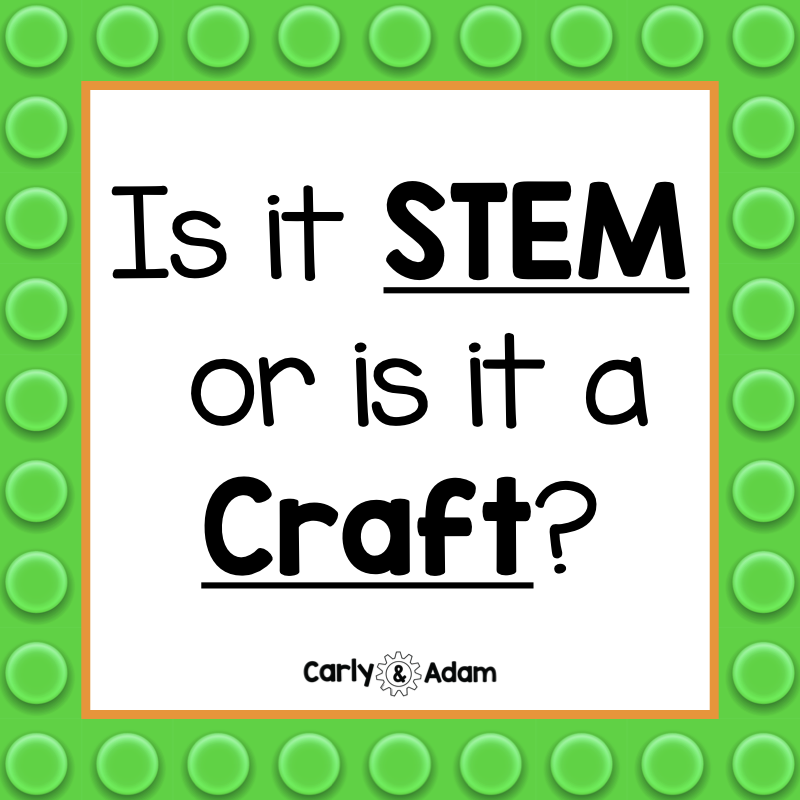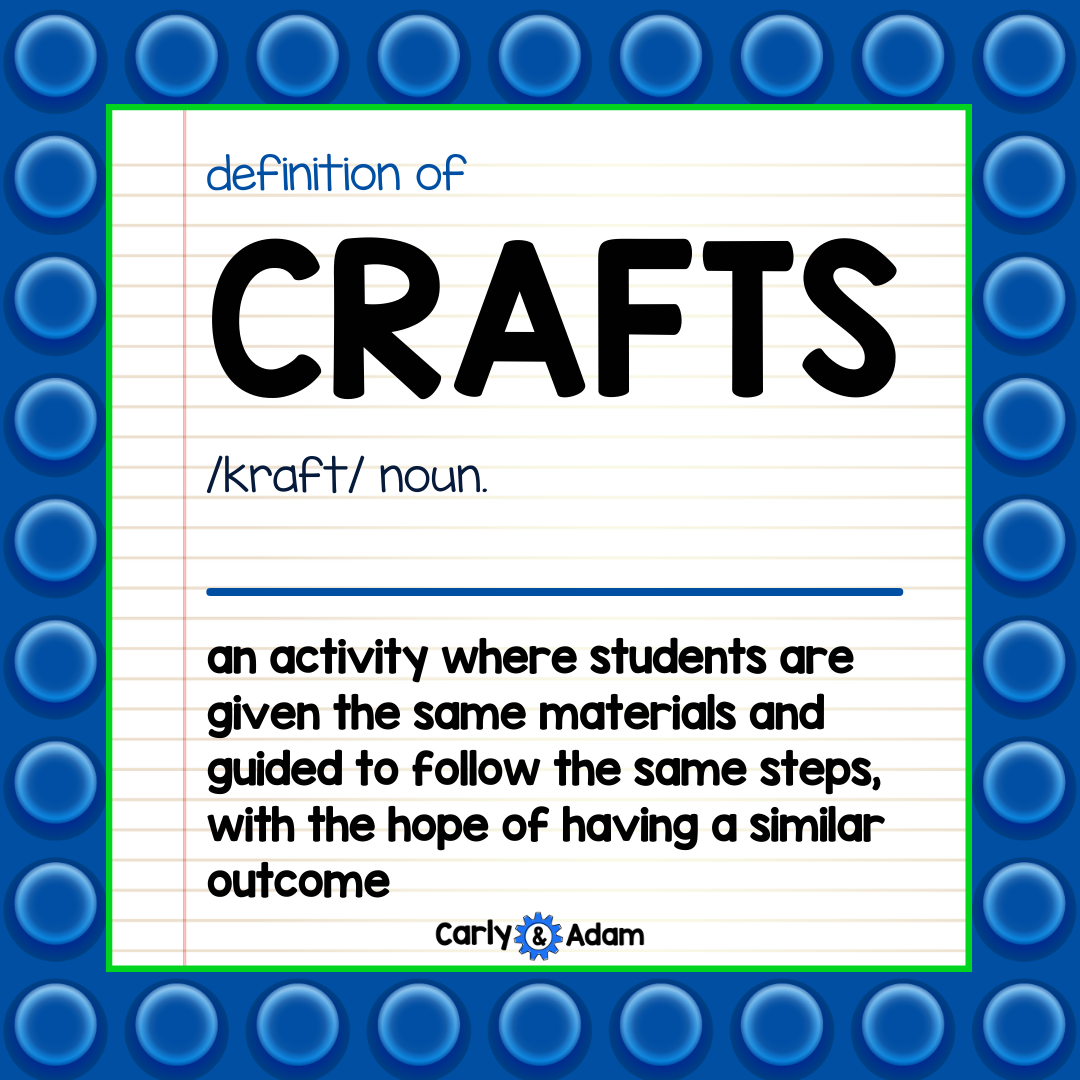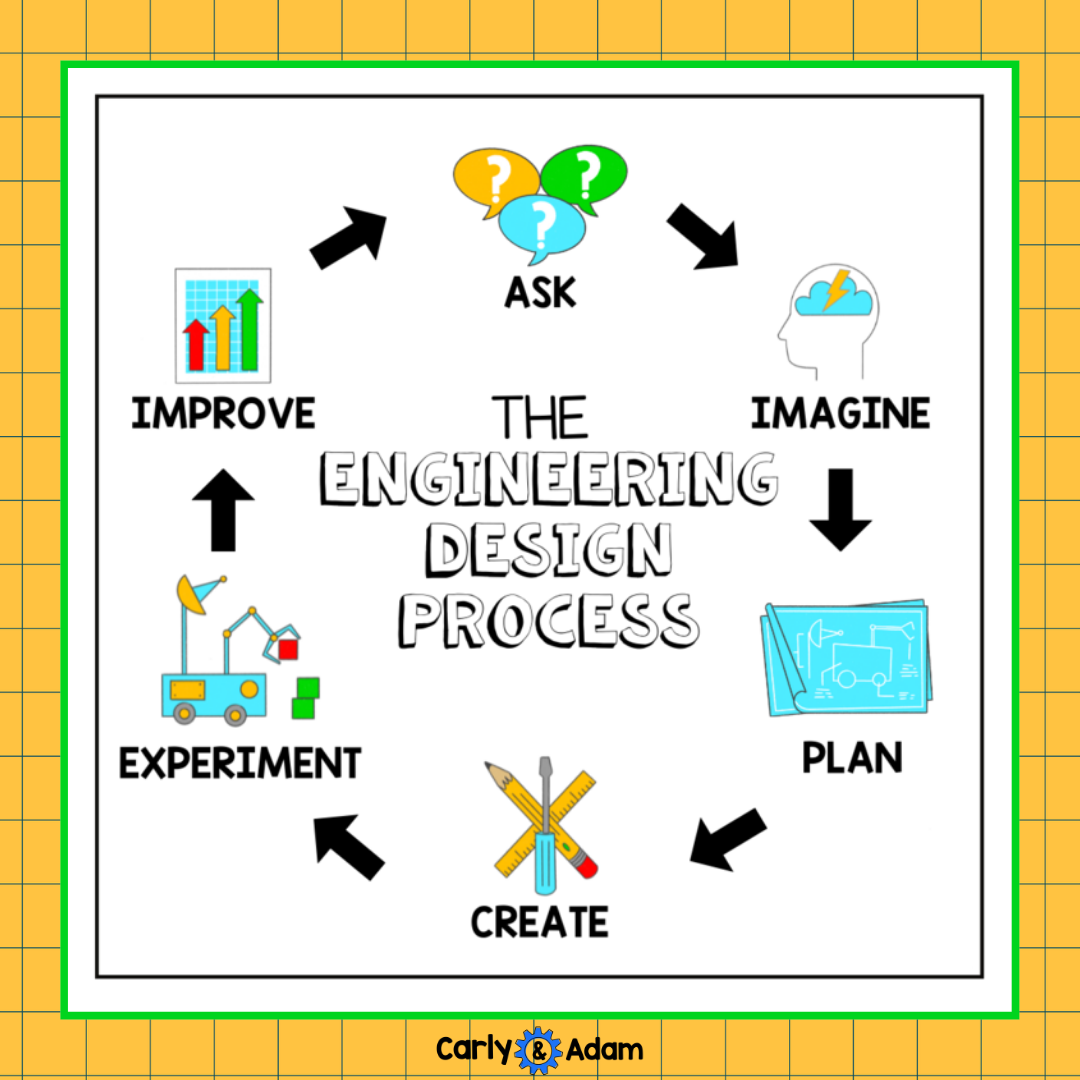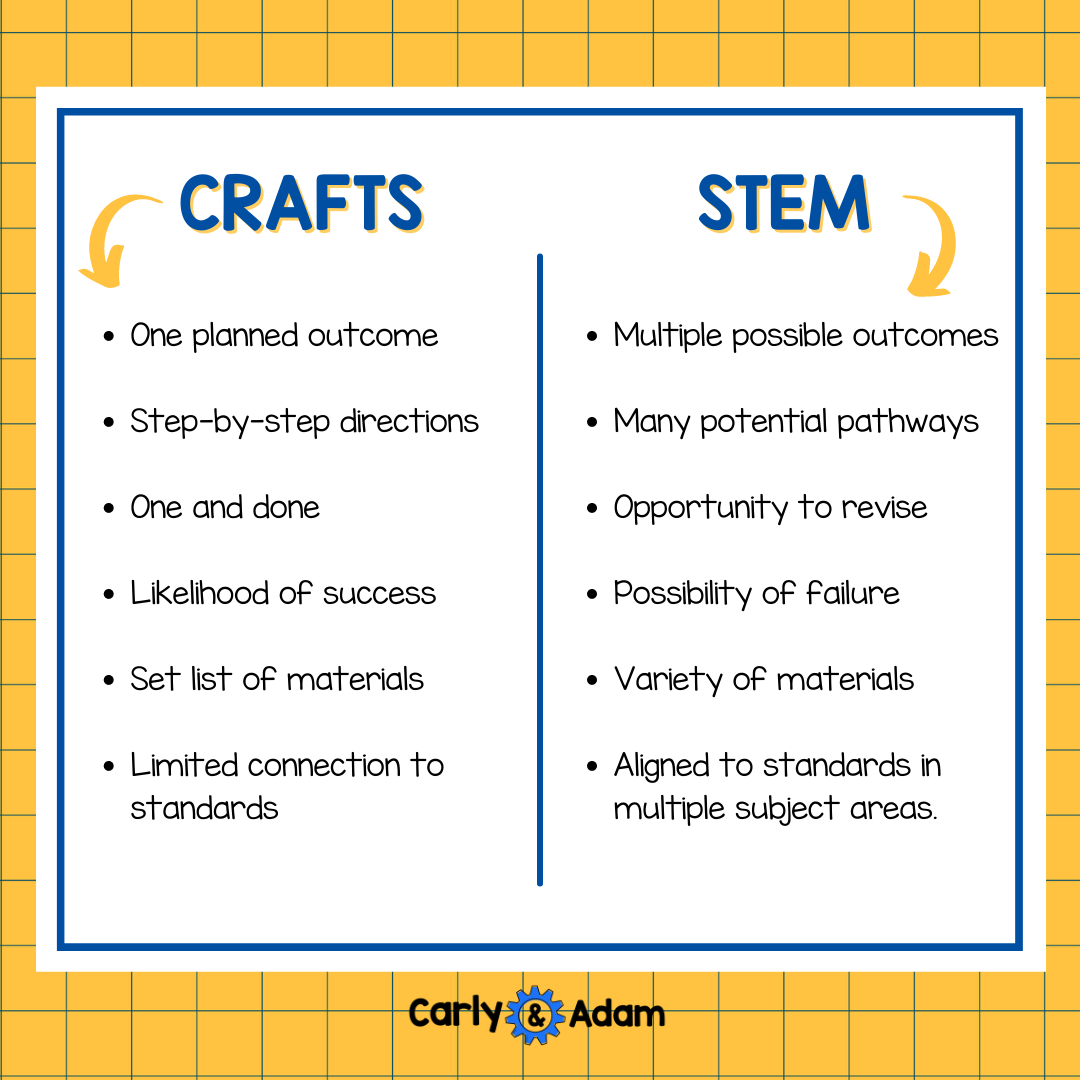Is it STEM or a Craft?
The following is a guest post from Dr. Jacie Maslyk.
What exactly is STEM? To some, it may seem just a step up from arts and crafts. Maybe a colleague or administrator visits your STEM classroom and has some questions, objections, or misconceptions about what they see. STEM and crafts are both hands-on in nature, but STEM is much, much more!
While STEM and crafts may have a few similarities, they are very different. This post will help to share insights into the differences between STEM and crafts.
Has your principal ever walked into your classroom while students are working, just to stand there and observe? Sometimes they show up at what seems to be the most inopportune moment. Maybe they don’t get to see the most engaging part of your lesson or maybe what they observe is not as rigorous as they expected.
Groups are gathered around a table sketching their prototype design on chart paper. Students are coloring in the binary code on their paper before they create their bracelets.
An observer might walk away and think that students were “just drawing,” even though drawing can be an important part of the planning process for students engaged in engineering and design. Maybe students are twisting pipe cleaners together to create a tree or a bird or gluing popsicle sticks together to make a bridge. These aren’t crafts. These examples are just some of the ways that STEM can be implemented in the elementary classroom.
So, what are crafts?
A craft is an activity where students are given the same materials and guided to follow the same steps, with the hope of having a similar outcome. Crafts are focused on aesthetics and having the project turn out “right.” Crafts are about making decorative objects by hand. They might include cutting and pasting or even adding googly eyes. Craft projects might be thematic or connected to a holiday. These projects don’t often have connections to content areas, and they may not reinforce any academic standards.
What is STEM?
STEM learning is the combination of science, technology, engineering, and math. It is the integration of these subjects that provide meaningful connected learning for students. It can look a little bit different in every classroom.
STEM instruction might include students learning about being a scientific observer and finding problems to solve. It can also mean students looking for patterns, asking and answering questions, and using their resources to find answers. In some spaces, STEM might look like a science experiment or a design challenge. STEM can include learning about weather, outer space, and plant life. It can also mean learning about coding, building structures, constructing graphs, or designing images. STEM is about developing a growth mindset and critical thinking skills.
What’s the same?
STEM and crafts do have some things in common. They both involve the chance for students to do something with their hands. Both experiences can be a little messy (and that’s OK.) Messy learning is fun learning! However, STEM has more than just fun to offer our students.
What’s different?
There are many ways that STEM and crafts are different. From the way that a lesson is conducted to the materials used, to the end product these two approaches are not the same.
In a craft activity, we provide students with an example of what their project will look like at the end. We model the steps or provide step-by-step directions to get to that outcome. We offer a specific set of materials and guide the process to completion. If students follow the steps and your guidance, they will likely be successful. There aren’t a lot of risks to take or problems to solve. Cut here. Glue this.
When you take a look at what students create through STEM, it looks different. Not every bridge is constructed the same way. Not every design solution uses the same materials. (Even if groups are provided the exact same materials, students design and build something unique to their solution.)
STEM uses different processes and models within the lessons. Whether using the engineering design process or working on the scientific method, students are at risk of possible failure. Their designs may or may not work. Their experiments may or may not be successful. As educators, we don’t have control over what happens in STEM. We work to empower our students and allow them to actively pursue learning in a variety of hands-on ways.
When STEM instruction is done well, it represents the connections between multiple subject areas in meaningful ways. It provides an academic purpose for the constructing, design, or experimenting that students are engaging in. It often aligns to multiple standards within multiple content areas, further demonstrating to students that what they are learning in school will benefit them in college, career, and beyond.
There are times that STEM may include an artistic element (the A in STEAM does stand for the Arts), but it does not mean that it is a craft. The real work of engineers, scientists, and roboticists involves sketching out ideas, creating blueprints, and sharing their designs. There may be art in the work that they do, just as there may be creative elements within your STEM instruction.
If your supervisors can’t see past the artistic nature of STEM, try to garner administrative support for STEM by sharing with them the benefits of STEM. Highlight the accomplishments of your students and share their work widely and often. Invite supervisors in to see what STEM looks like in your classroom but also share with them the purpose behind the learning experiences that you are providing, so they will know the value of STEM.
Have more questions or need additional resources?
Join our Free Facebook Group.
For more STEM ideas, inspiration, and collaboration with other STEM teachers be sure to join our FREE Facebook group Elementary STEM Teachers with Carly and Adam!
We hope you have found this blog post helpful. To stay connected with Carly and Adam's teaching tips and classroom freebies be sure to follow us on Facebook, Pinterest, Teachers Pay Teachers, and subscribe to our blog!
An educator for the last 23 years, Dr. Jacie Maslyk, has served as a classroom teacher, reading specialist, elementary principal, and assistant superintendent. She is the author of STEAM Makers: Fostering Creativity and Innovation in the Elementary Classroom, Connect to Lead: Power Up Your Learning Network to Move Your School Forward (ISTE), Remaking Literacy: Innovative Instructional Strategies for Maker Learning and Unlock Creativity: Opening a World of Imagination With Your Students. You can read more on her blog, Creativity in the Making, at www.jaciemaslyk.blogspot.com. Connect with Jacie on Twitter @DrJacieMaslyk or email her at jaciemaslyk@gmail.com .








